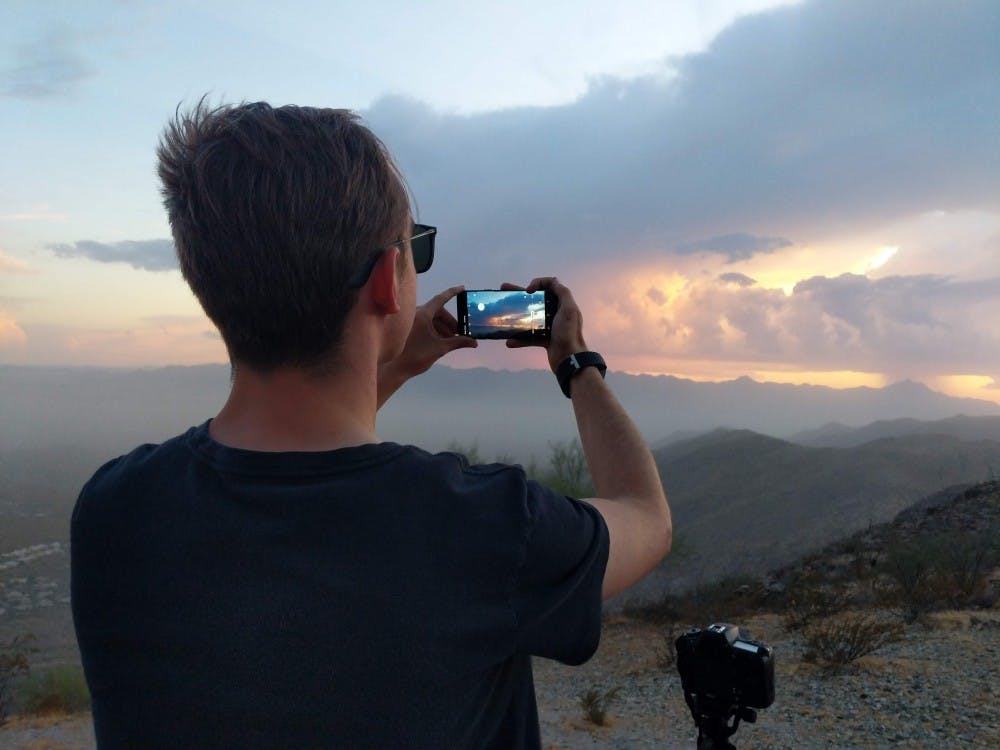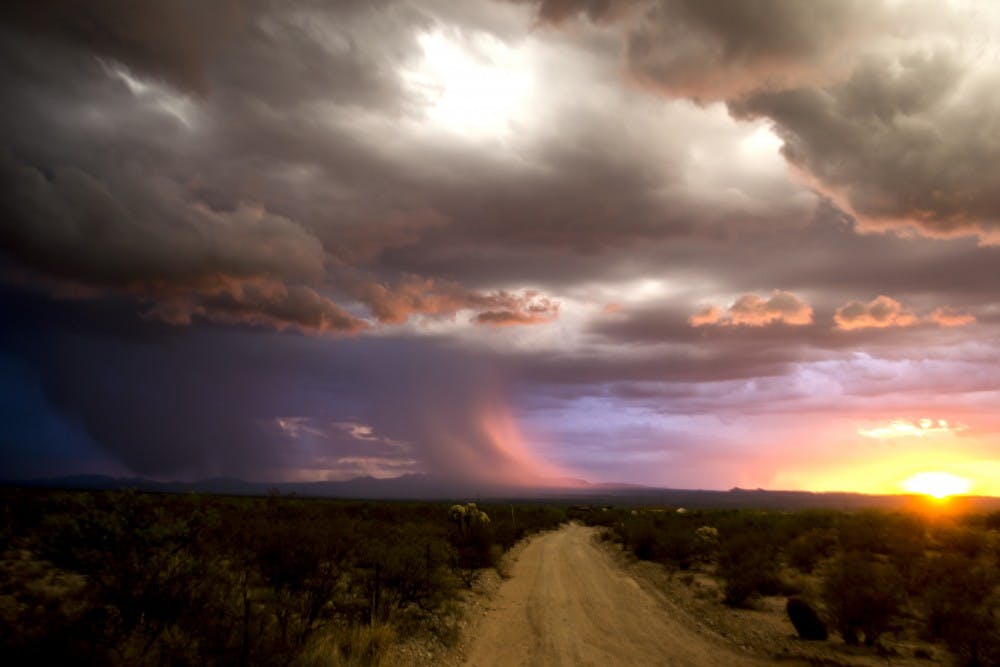Along with its barely habitable summer heat, Arizona is known for stunning sunsets that bathe the sky in golden, orange and pink hues.
In fact, Arizona's flag depicts a classic sunset with its crepuscular rays spreading across the sky. And when a sunset lights up the Phoenix skyline, social media flickers to life with hundreds of photos.
A few simple tips can make your smartphone photos stand out amid a sea of mediocre sunset shots.
1. Watch the clouds
A keen eye for what the clouds are doing during the day can clue you in on how the canvas of the sky will light up in the evening.
Patchworks of clouds catch the light and color of the setting sun, turning a great sunset into a spectacular one. As the sun lowers below the horizon, its light will hit the clouds in stages.
First, wispy cirrus clouds turn orange and yellow like suspended tufts of grass, then mounds of heavier cumulus catch pink and purple shades. Other atmospheric elements like storms, pollution or smoke can also enhance the colors of the sky.
Generally, look for high textured clouds that move slowly during the day, but SunsetWx, a website developed by meteorology students, can help predict the quality of sunrise and sunset weather.
The foreground, the object in front of the sunset, can be just as important as the sky itself. Don’t settle for the campus parking garage or Loop 202 as a foreground.
2. Pick a foreground
When facing the setting sun, anything in front of it will become a shadowy silhouette, so find something with an interesting shape to break up the space in front of the sky.
Natural foregrounds like the iconic Saguaro cacti or mountains make great silhouettes, and many trails across the Valley offer stunning views with these features.
Gaining elevation gives a unique perspective of the sunset shining on the ground below. Even a quick climb up "A" Mountain offers fantastic views of Tempe and the distant mountains.
When used creatively, human elements can add perspective and intrigue to your photos. Buildings with reflecting windows, bridges and interesting architecture can stand out in a shot at sunset.
It's best to start shooting about an hour before the sun sets to catch all the little colors and changes that start happening before the sun falls under the horizon. Check the sunset time here.
3. Start snapping
Once you have chosen your location and your foreground, line up the bottom of the frame with the horizon to keep it straight and hold the camera as still as possible (or use a tripod) while you snap a few dozen photos. Take more photos than you think you need so you have plenty to choose from.
4. Adjust brightness
Most smartphones have a slider to make the image brighter or darker. If shooting a silhouette, adjust the brightness to make the foreground dark, and if shooting away from the light, make the image brighter.
5. Experiment
Play around with the composition until it’s just right. If you have a minimal foreground and a vibrant sky, let the sky take up most of the image; and if you have an active foreground, let it fill more of the frame.
6. Turn around
Now that you have some shots, turn around. An often overlooked part of sunsets is how the sky looks toward the east — opposite direction of the setting sun. The sky can turn shades of lavender, and sometimes rays of light, called anti-crepuscular rays, cut across the sky toward the eastern horizon.
7. Relax
Don't forget to relax and enjoy the sight. Photographers can get so caught up in the job of trying to capture the view that they don't take a moment to soak in the beauty of their subjects.
Once you have your best photo, don’t even think of opening the filter gallery. Filters from Instagram or Snapchat add artificial color to bland scenes and rarely help a sunset photo.
All your photo needs is some tweaking. In your photo editor, make slight adjustments to contrast, brightness and clarity to make it just to your liking.
And voila, you have an impressive photo worth a thousand likes.
Reach the reporter at cscragg@asu.edu or follow @monsoonchaser on Twitter.
Like State Press on Facebook and follow @statepress on Twitter.






